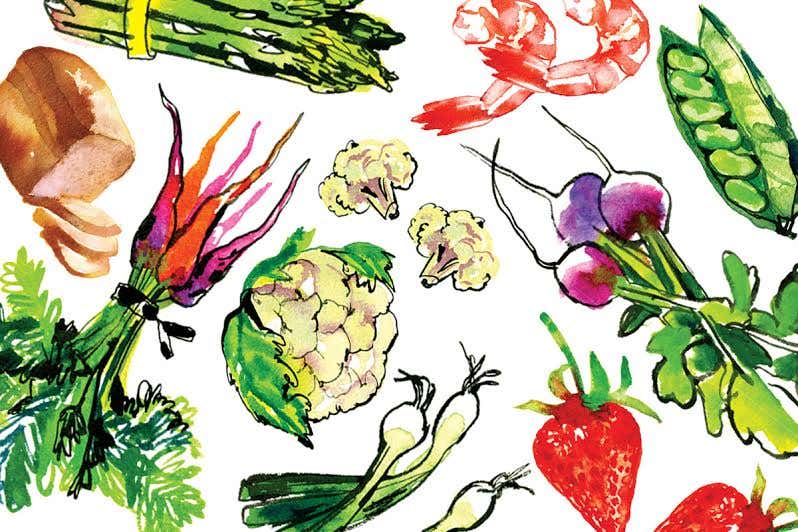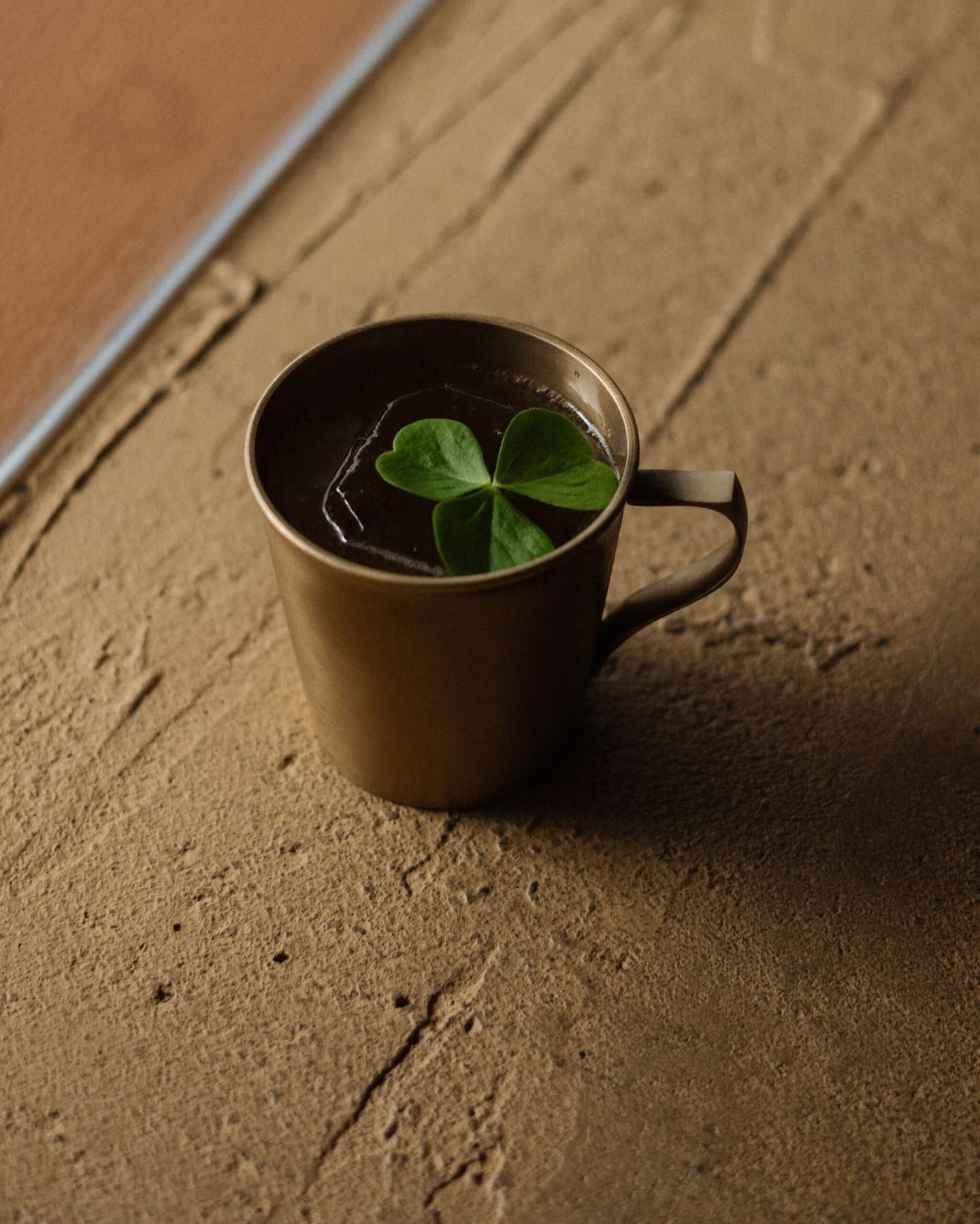
Vintage Virginia
Imagine Thomas Jefferson—never a totally willing politician—alone in his room in Philadelphia or Annapolis, eagerly writing out orders for more cases of white hermitage or frontignan to be shipped from his beloved France. Then imagine him at home in Monticello, in the hills of northwestern Virginia, trying to cultivate cuttings from the noble vines of Europe—and failing, time after time, until finally he admits defeat, writing in a letter to a friend in 1809 that he is unwilling to expend any more ''time & efforts in the search of foreign vines, which it will take centuries to adapt to our soil & climate.''
Just off his tractor and smoking a small, sweet-smelling cigar, Dennis Horton rummages for a wine thief—a glass pipe used to siphon samples out of barrels—in the cellar of the winery he owns with his partner, Joan Bieda, near Gordonsville, about 20 miles north of Monticello. Horton, a Missouri-born entrepreneur (he cofounded the high-tech Automated Systems, Inc., in Springfield, Virginia) who only recently came to viticulture (and who bears little resemblance to Jefferson in style or appearance—he has curly dark hair and twinkling eyes behind dark-rimmed glasses), operates his Horton Vineyards down in the rolling plains just beneath Jefferson's mountain.Yet Horton and a half-dozen or so other Virginia winemakers, mostly here in the state's Piedmont region, are overcoming the problems inherent in winemaking in the mid-Atlantic states—such as sweltering summers and frigid, windswept winters—and making superior wines that Jefferson himself would have gladly savored.
To Horton, it's just a matter of finding the right grapes. ''If my claim to fame is anything,'' he says with a sly grin, ''it's probably that I've ripped up more vines than most people have put in.'' Last year, for instance, he gave up on syrah—a grape he had high hopes for when I talked with him in the mid-1990s—after losing a large number of his syrah vines each year to winter kill. In their place he has been planting pinotage, a South African cross between pinot noir and cinsaut (a Rhone wine variety). Not long ago, he tore out his zinfandel and pinot meunier, too.
But Horton has had his successes. His best white wine, year after year, is viognier. It is earthier and fuller than the viognier produced increasingly by California vintners, yet it has the same haunting, floral aroma of peaches and lichee nuts. Horton's best red, on the other hand, is a dark, rich, complex proprietary blend called Dionysus—a mixture of Portugal's touriga nacional and tinta cao, grapes even the Californians have yet to catch onto for table wines.
Along with his failures and his award-winners, Horton also produces a variety of pleasant, sometimes very good wines from such grapes as marsanne, mourvedre, and an American cultivar, of the species aestivalis, called norton (the wine is inevitably labeled Horton Norton). In a foggy plot in front of the winery, he has also recently planted rkatsiteli, an Eastern European grape for use in ''something I said I wouldn't do—champagne''. And it's too early yet to judge how the six varieties of Spanish grapes he has in the ground will show once they bear fruit. ''The idea isn't to try to be different,'' he explains, ''but I am more of a viticulturist than a winemaker.''
Horton does employ a winemaker—Virginia-trained Graham Bell—but it is evident, as he draws samples from the rows of barrels in his cellar, that he is keenly interested in that part of operations as well. He talks excitedly of the potential for his inky nebbiolo, then tells me to keep a dollop of maturing 1997 touriga nacional in my glass while he fetches a thief full of tinta cao from the same vintage to mix in. He points out what each adds to the blend as I swirl the two together: The touriga provides tannin, structure, and a brambly flavor, and the tinta, ''a full, aromatic component''.
Meanwhile, Horton is visibly frustrated with his fellow Virginia grape-growers, whom he believes wrongly concentrate on chardonnay (though he makes a credible one himself) and cabernet sauvignon. These may be popular with local customers, he says, but they can't generally compete nationally in their quality/price ratio. ''I'm a little disappointed that there aren't more surfers getting on the wave,'' he adds—that is, focusing on niche wines they can excel at.
Horton's annual production of almost 35,000 cases proves his success in marketing and distributing his wines outside the Old Dominion itself. California is Horton's biggest non-Virginia customer, and his wines have been served in some of the country's best restaurants, among them Jean Georges and Gramercy Tavern in Manhattan, Rubicon in San Francisco, and Lucques in Los Angeles.
Horton has been compared with the exuberantly multivarietal California winemaker Randall Grahm of Bonny Doon Vineyards, one of the first of the ''Rhone Rangers'' (so named for their fondness for grape varieties such as syrah and viognier, grown in France's Rhone Valley). ''At least they have the Rhone Rangers out there,'' he says, lighting up another cigar. ''Here, I'm the Lone Ranger.''
Dennis Horton is without doubt the most colorful of the new breed of Virginia winery owners. But among the fifty or so commercial facilities scattered throughout all regions of the state, there are a few others who produce delicious wines—even if their interests in national markets and exotic grapes are more limited. Less than two miles from Horton, for example, adjacent to the ruins of a mansion Thomas Jefferson designed in the early 1800s for statesman James Barbour, is Barboursville Vineyards—founded in 1976 by one of Italy's largest wine producers, Zonin. Its extensive line includes a good pinot grigio and a succulent malvasia-based dessert wine called Malvaxia Riserva. And just around the hillside from Monticello, where Jefferson's Italian friend Filippo Mazzei tried in vain to grow vinifera 226 years ago, is Jefferson Vineyards, which makes nice cabernets, both sauvignon and franc.
There are also two Tidewater wineries of note: Williamsburg Winery, with very good chardonnays and bordeaux-style blends, and Ingleside Plantation Vineyards, near Fredericksburg, which makes a convincing sparkling wine. And if you follow the eastern slope of the Blue Ridge Mountains north from the red clay country where Dennis Horton dwells, you come to the heart of Virginia's chardonnay territory: Here, one of the state's new crop of wineries, Piedmont Vineyards, in the horse country surrounding Middleburg, makes excellent chardonnay under the direction of John Fitter. (It received an influx of capital when it was purchased in early 1998 by Baron Gerhard von Finck of Germany.)
But the one winery that gives Horton a run for its money—and that, in fact, surpasses Horton in consistency over a full range of varietals—is Linden Vineyards, perched like a small, pristine jewel on a wooded hillside east of Front Royal. Winemaker and owner Jim Law creates wines that are unfailingly elegant, complex, and flavorful. Law believes in ripe fruit and in not heavily oaking his wines. The Linden whites—a riesling-vidal blend, several sauvignon blancs, and a seyval blanc—are all lean and intense, with delicate fruit. Law's cabernets, sauvignon and franc, are reminiscent of those made in California's Alexander Valley, with moderated fruit and good tannins. Law's next steps are to experiment more with Virginia oak barrels (most of the state's wineries use French or midwestern American wood), to make vineyard-designated wines, and to blend the petit verdot he has recently planted into the cabernets ''to provide complexity down the middle''.
In the end, Thomas Jefferson was right. It did take centuries—just over two, as it happens—for vineyardists and winemakers to learn how to make good wines from European grapes planted in Virginia soil. But now they seem to be on the right track, and they're producing wines of a variety and quality not even our First Connoisseur could have anticipated.
Keep Reading
Continue to Next Story










